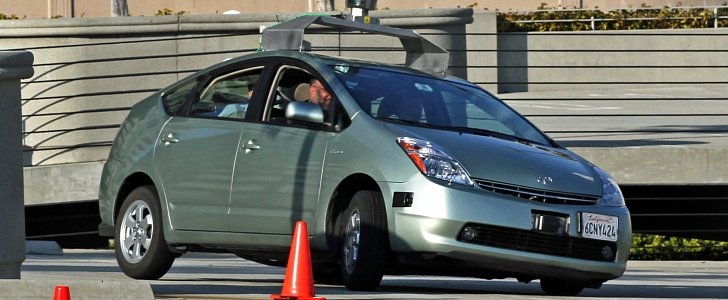If people imagined that once autonomous cars hit the roads, everyone - even a five-year-old - would be able to use them as personal buses, they were spectacularly wrong. Even though that day may come, it won't be within the foreseeable future.
Until the entire infrastructure is ready and all cars become autonomous, you'll still be required to own a driving license to operate a self-driving car. And by "operate" we mean read your e-mails and watch the latest episode of whatever TV show will be trending then while the car does all the work, even though you were actually supposed to watch the road and be ready to intervene.
And exactly for that reason, current drivers as well as new ones will have to be educated in the proper use of self-driving cars. It may seem simple - "push the button, put the feet up, relax and enjoy" - but some sort of etiquette needs to be developed. Just look at what happened with Tesla's Autopilot when it was first introduced: people went nuts, and Tesla had to jump in and make some adjustments. That's OK for a private company, but those making the laws need to get it right from the start.
The European Transport Safety Council, an independent non-profit organization, dedicated to reducing the numbers of deaths and injuries in transport in Europe dating back to 1993, believes a number of measures have to be taken by the EU as quickly as possible if it's to be ready for automated and fully-autonomous vehicles.
Among these, the ETSC believes, is the need for an update of the driving license regulations that should take into account the existence of self-driving cars. For instance, new and existing drivers should prove they can safely take back control from the vehicle's automated driving systems.
Other measures the ETSC included in its report refer to the mandatory installation of driver assistance systems (automated emergency braking, for instance) in all new vehicles, as well as the full cooperation of carmakers in case of a collision by sharing the data so that it can be used by everyone to prevent further similar incidents.
Antonio Avenoso, Executive Director of the European Transport Safety Council, said, “Automated vehicles are already starting to appear on Europe’s roads, but regulators are still stuck in the slow lane. It is crucial that we get a much greater understanding of what the real world safety benefits would be, and what new risks would be introduced before these vehicles are put on sale.”
The EU is currently lagging behind certain parts of the US where the local authorities have taken a more proactive approach towards this emerging technology, but it's a gap it can easily cancel if the right decisions are made.
And exactly for that reason, current drivers as well as new ones will have to be educated in the proper use of self-driving cars. It may seem simple - "push the button, put the feet up, relax and enjoy" - but some sort of etiquette needs to be developed. Just look at what happened with Tesla's Autopilot when it was first introduced: people went nuts, and Tesla had to jump in and make some adjustments. That's OK for a private company, but those making the laws need to get it right from the start.
The European Transport Safety Council, an independent non-profit organization, dedicated to reducing the numbers of deaths and injuries in transport in Europe dating back to 1993, believes a number of measures have to be taken by the EU as quickly as possible if it's to be ready for automated and fully-autonomous vehicles.
Among these, the ETSC believes, is the need for an update of the driving license regulations that should take into account the existence of self-driving cars. For instance, new and existing drivers should prove they can safely take back control from the vehicle's automated driving systems.
Other measures the ETSC included in its report refer to the mandatory installation of driver assistance systems (automated emergency braking, for instance) in all new vehicles, as well as the full cooperation of carmakers in case of a collision by sharing the data so that it can be used by everyone to prevent further similar incidents.
Antonio Avenoso, Executive Director of the European Transport Safety Council, said, “Automated vehicles are already starting to appear on Europe’s roads, but regulators are still stuck in the slow lane. It is crucial that we get a much greater understanding of what the real world safety benefits would be, and what new risks would be introduced before these vehicles are put on sale.”
The EU is currently lagging behind certain parts of the US where the local authorities have taken a more proactive approach towards this emerging technology, but it's a gap it can easily cancel if the right decisions are made.

